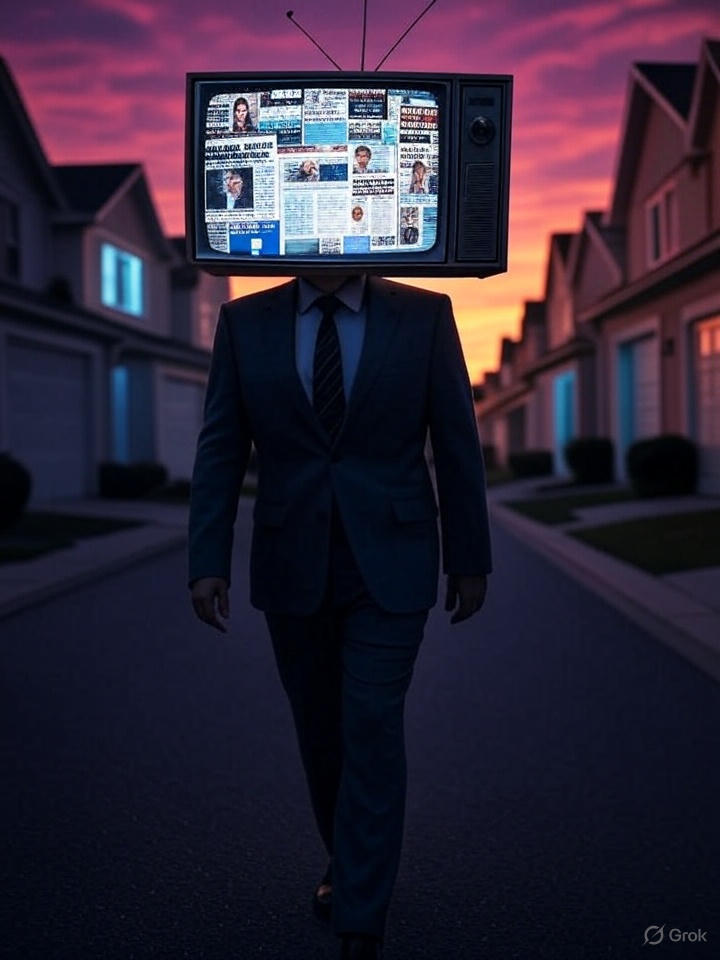
You are awake. Your eyes are open. You go about your day, work your job, consume your news, and engage in conversations. Yet, a growing and unsettling argument suggests that a majority of Americans are not truly conscious—not in the critical, engaged sense. They are sleepwalkers, inhabitants of a collective “waking dream state,” navigating a world of illusions they mistake for reality, and in doing so, are becoming incapable of addressing the pressing crises that define our time.
This is not a commentary on intelligence, but on consciousness. It is a critique of the modern condition, where the very fabric of perception has been rewoven by powerful forces into a comfortable, distracting, and often terrifying simulacrum of the real world.
The Architecture of the Dream
This waking dream is not an accident; it is constructed. Its architects are a combination of technology, economics, and politics.
- The Digital Echo Chamber: Our primary window onto the world is now a screen, curated by algorithms designed for profit, not truth. These algorithms feed us a perpetual stream of content that confirms our biases, outrage, and fears. We reside in personalized realities where facts are negotiable and emotional resonance trumps empirical evidence. Whether it’s a curated Facebook feed or a partisan news network, the goal is the same: engagement through validation, not enlightenment through challenge.
- The Spectacle of Consumerism: The quintessential “American Dream” has been hollowed out into a relentless cycle of acquisition and distraction. We are encouraged to dream not of a better society, but of a newer car, a bigger house, and a more curated lifestyle. This materialist fantasy serves as a potent anesthetic, diverting attention from societal decay, existential threats like climate change, and a deep-seated spiritual emptiness by offering the temporary solace of a purchase.
- The Weaponization of Tribalism: Reality requires a shared set of facts to serve as a common ground for debate and progress. That ground has eroded. Political and cultural identities have become so polarized that they now function as alternate realities. For many, being a member of their “team” is more important than being a citizen of a shared nation. The dream here is a narrative of perpetual conflict where the other side is not just wrong, but evil, making any consensus on reality impossible.
The Symptoms of the Sleeper
How do you identify a population in a waking dream? The signs are all around us.
· Aversion to Complexity: Simple problems have simple solutions. The complex, interconnected challenges of the 21st century—systemic inequality, geopolitical shifts, pandemics—require nuance, patience, and sacrifice. The dream state prefers bumper sticker slogans and scapegoats.
· Emotional Reasoning Over Empirical Evidence: Feelings have become more valid than data. If a fact feels untrue or threatening to one’s identity, it is dismissed as “fake news.” The emotional comfort of the dream is protected at all costs, even at the expense of reality itself.
· Chronic Distraction: The dream is maintained by a constant stream of content, outrage, and entertainment. There is no quiet moment, no space for introspection, no boredom that might lead someone to question the nature of their reality. We are forever scrolling, forever watching, forever listening—never thinking.
Is Awakening Possible?
The most damning part of the critique is the word “incapable.” It suggests a point of no return. If our perception is so thoroughly mediated by forces we don’t control, is awakening even possible for the masses?
The path out is arduous. It requires a conscious, individual commitment to break from the dream:
- Digital Asceticism: Actively curating your information diet, seeking out primary sources, and engaging with perspectives that genuinely challenge your own.
- Embracing Uncertainty: Accepting that the world is complex and that easy answers are usually wrong. Cultivating intellectual humility.
- Re-engaging with the Tangible: Turning away from the screen and investing in the local, the physical, and the personal—community, nature, direct human connection.
Ultimately, the claim that most Americans are in a waking dream is a provocation. It is a stark warning that the greatest threat to our future may not be any single external enemy, but our own mass inability to distinguish the real from the manufactured. The first step to solving a problem is recognizing that it exists. And the first step to waking up is realizing you have been asleep.